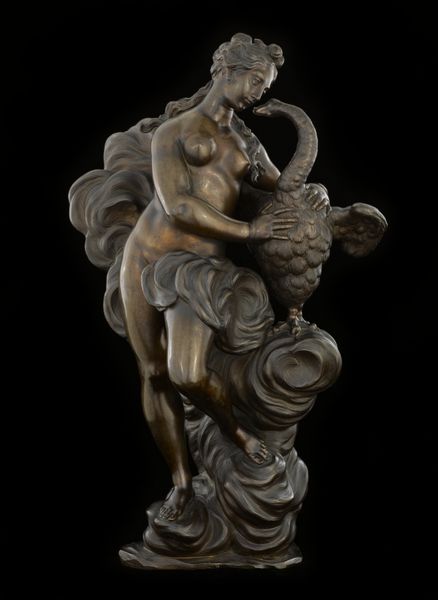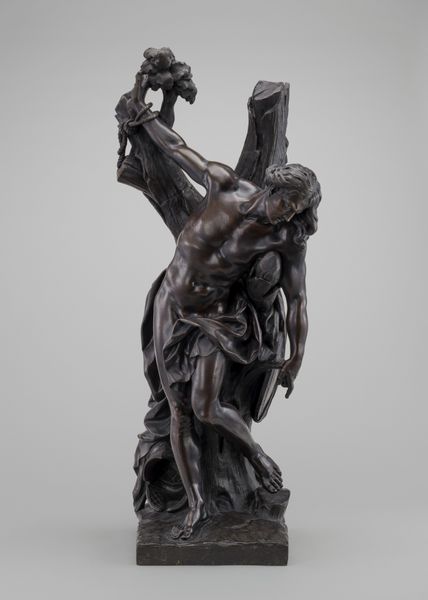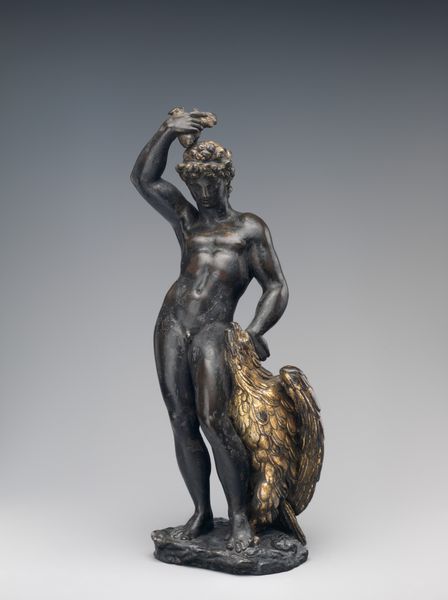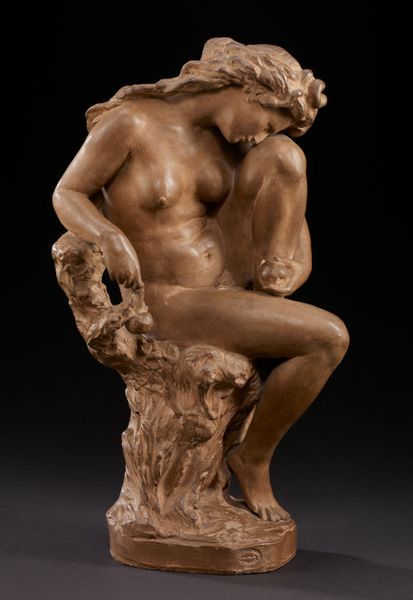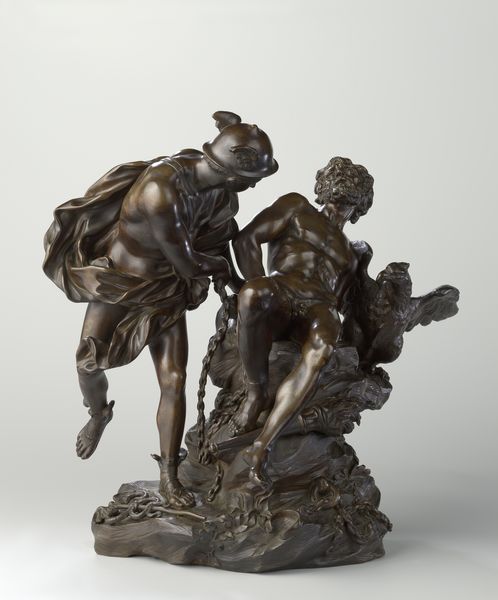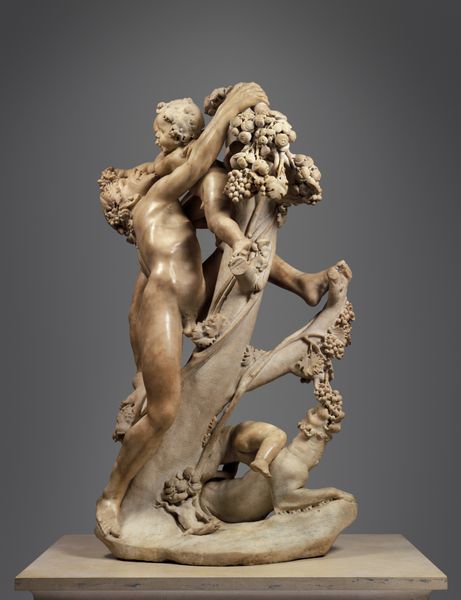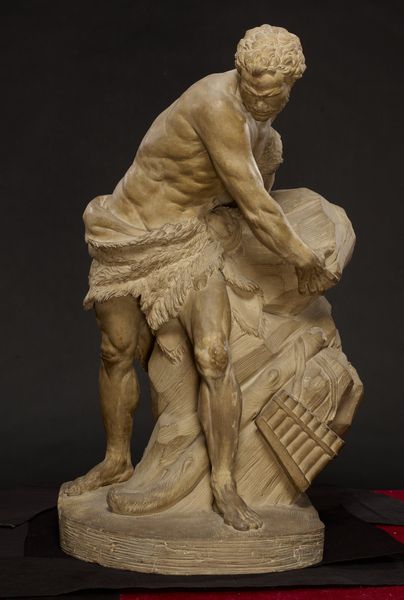
bronze, sculpture
#
mobile web
#
website interface
#
sculpture
#
human figure
#
bronze
#
sculptural image
#
male figure
#
unrealistic statue
#
ui concept
#
sculpture
#
italy
#
natural form
#
statue
Copyright: Public Domain
Antonio Montauti created this bronze sculpture, "Ganymede and the Eagle", in the early 18th century. At this time, the stories of Greek Mythology served as a means to explore themes of eroticism and power dynamics, especially within elite circles. Here, Ganymede, a Trojan youth known for his beauty, is being abducted by Zeus in the guise of an eagle. The sculpture beautifully renders Ganymede's ambiguous expression. Is it fear, or is it a kind of serene acceptance? This moment, immortalized in bronze, speaks to the complex interplay of desire and vulnerability, raising questions about consent and agency. Such depictions often served to normalize and aestheticize male relationships, reflecting the social norms and power structures of the period. This sculpture offers a lens through which we can consider how historical representations continue to shape our understanding of sexuality and identity.
Comments
minneapolisinstituteofart almost 2 years ago
⋮
Captivated by the beauty of the shepherd Ganymede, Zeus transformed himself into an eagle and abducted the youth, whom he then installed as cupbearer to the gods on Mount Olympus for eternity. In most representations, the mortal shepherd boy is shown overpowered by the formidable eagle, but here Ganymede stands upright and engages with the eagle through a gesture of affection and familiarity. This friendly pairing suggests that Ganymede’s ascent to Mount Olympus was not so much an abduction but a joyful transcendence from the earthly realm to the divine.
Join the conversation
Join millions of artists and users on Artera today and experience the ultimate creative platform.
